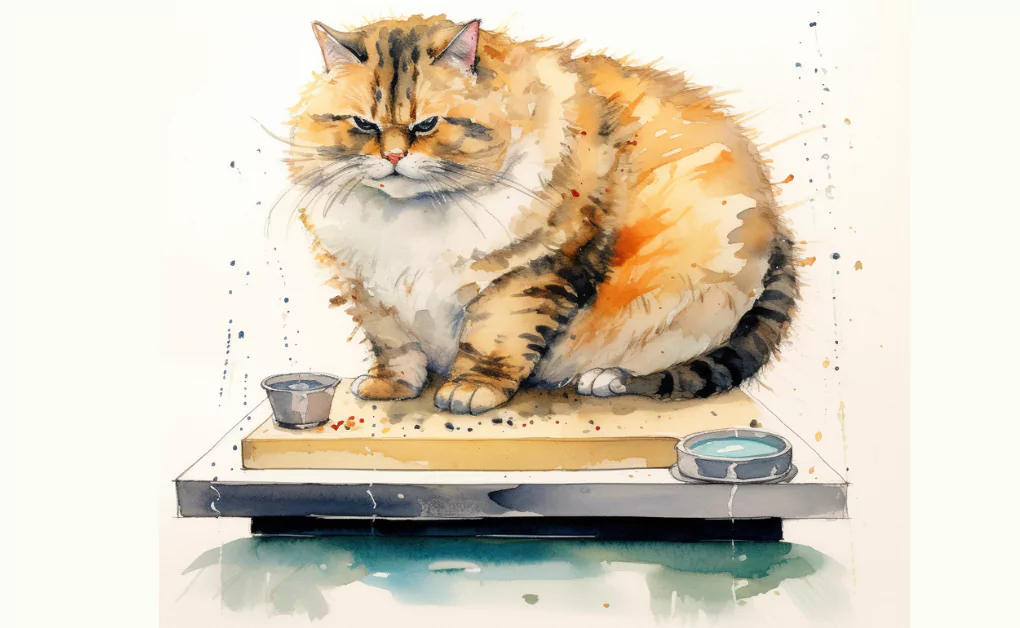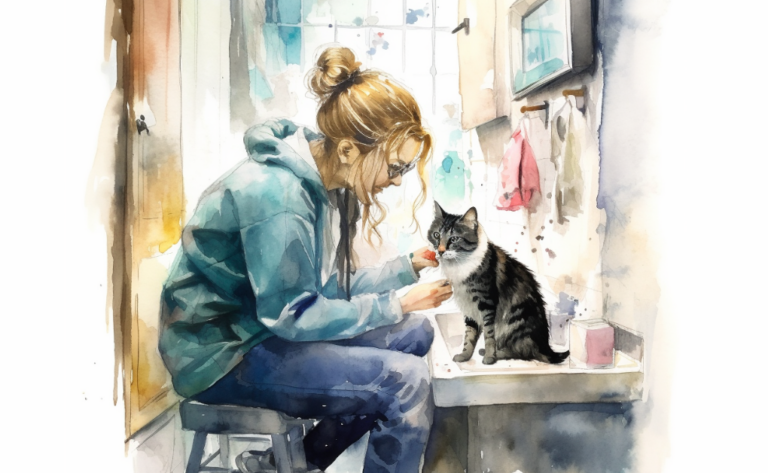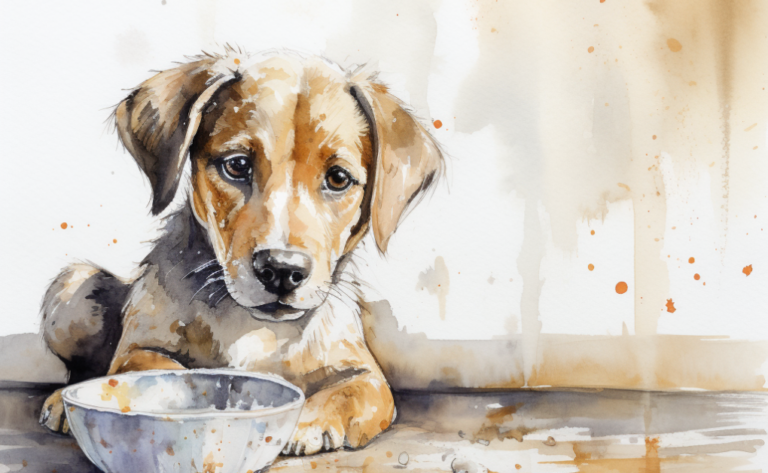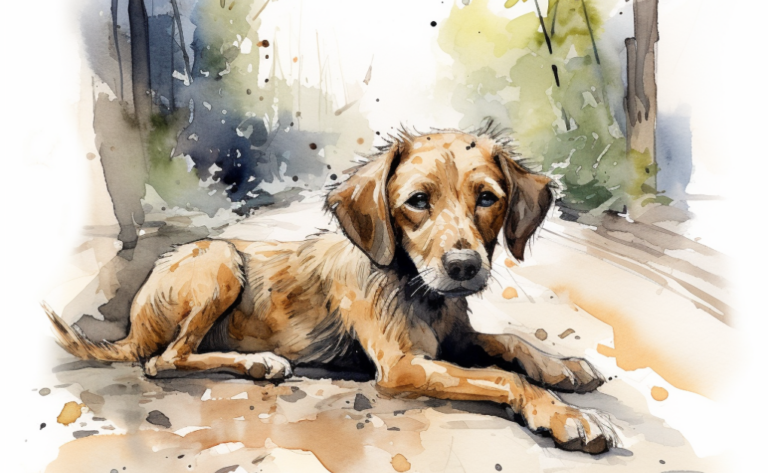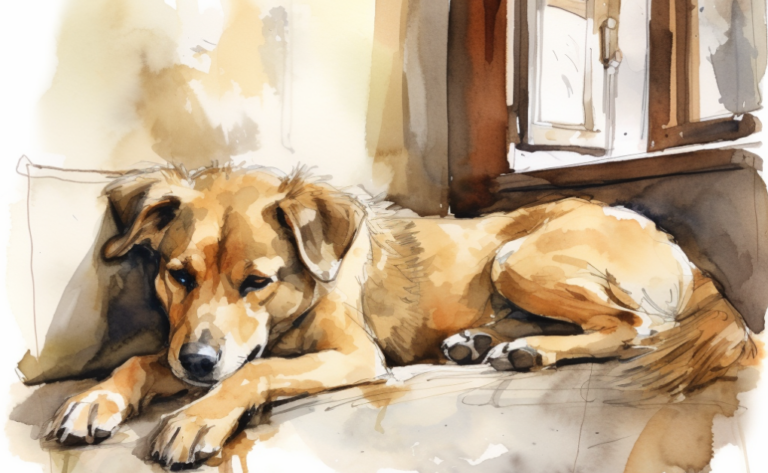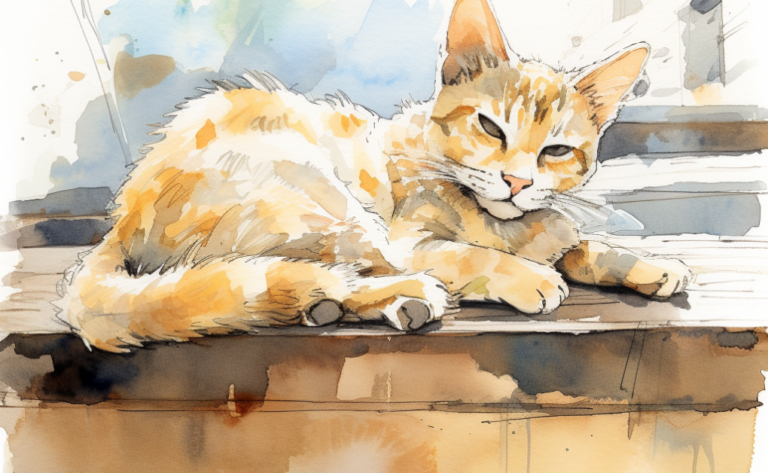What is Obesity in Cats?
What is it?
How is it Treated?
Breed Predispositions
There are no specific breeds predisposed to obesity in cats. However, indoor cats and those with a sedentary lifestyle are at a higher risk of becoming overweight or obese.
Introduction
Sophie had always adored her cuddly, affectionate tabby cat, Mr. Whiskers. Over the years, she had come to think of his round belly and ample figure as just part of his charm. However, during a routine check-up at the veterinarian’s office, she was surprised to learn that Mr. Whiskers was actually considered obese. The vet explained the potential health risks associated with feline obesity, and Sophie realized she needed to make changes to ensure her beloved pet’s well-being.
Obesity is usually defined as a body fat percentage (BF%) greater than 30%, and lean cats should be between 10%-30%. It leads to a cat’s weight surpassing the ideal range for its breed, age, and size. This condition, characterized by a significant increase in overall weight, can detrimentally affect a cat’s health and welfare. Obesity can impair a cat’s mobility, make them prone to various health conditions, and lessen their quality of life.
Weight issues, even a slight weight gain, can pose considerable health risks, as cats tend to carry extra pounds less favorably than their lean counterparts. Maintaining your pet’s healthy weight is vital for their well-being and longevity. Achieving this involves proper diet regulation, portion control, and regular exercise, all crucial in preventing and managing cat obesity. The goal is not for a severely overweight cat to reach an ideal weight instantly, but a gradual and steady reduction in weight ensures a safe and healthy transition.
What is the Normal Weight for Cats?
The normal weight for a domestic cat can greatly vary based on factors like breed, age, and sex. However, on average, most domestic adult cats should weigh between 8 to 10 pounds (around 3.6 to 4.5 kilograms). Some larger breeds, like Maine Coons or Norwegian Forest Cats, can weigh up to 20 pounds (around 9 kilograms) or more and still be considered healthy.
Nevertheless, it’s about more than just the number on the scale. The body condition of the cat is also an important consideration. Vets often use a body condition score to assess a pet’s body composition, considering factors like whether the cat’s ribs and spine can be easily felt, whether there is a noticeable waist and the amount of abdominal fat.
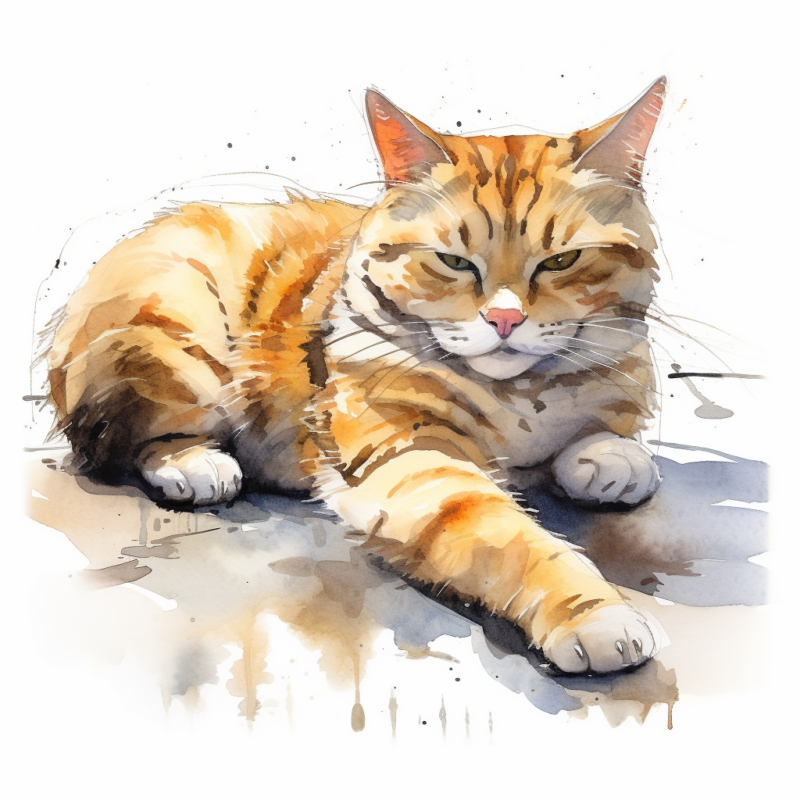
It’s also crucial to remember that each cat is an individual, and what is normal for one might not be for another. Regular vet check-ups are the best way to ensure your cat maintains a healthy weight. If you have concerns about your cat’s weight, it’s best to consult with a veterinarian for personalized advice.
Health Risks Factors in Obesity
Obesity is a common health problem in cats and can contribute to several serious health conditions. Here are some health risks associated with obesity in cats:
- Diabetes Mellitus: Obesity is a leading risk factor for developing diabetes in cats. Excessive body weight can lead to insulin resistance, where the body cannot effectively use insulin to regulate blood sugar levels.
- Orthopedic Problems: Excess weight stresses a cat’s joints and can contribute to arthritis and hip dysplasia. Overweight cats may also experience general discomfort when moving and become less active, which can further contribute to weight gain.
- Hepatic Lipidosis (Fatty Liver Disease): When an overweight cat goes without eating for some time, the body begins to use fat stores for energy. This fat can accumulate in the liver, leading to a serious condition called hepatic lipidosis.
- Urinary Tract Disease: Overweight cats are at a higher risk of developing urinary tract diseases such as bladder stones or urinary tract infections.
- Skin Problems: Obesity can lead to skin problems as overweight cats often have difficulty grooming properly. This can lead to matting, skin infections, and other dermatological issues.
- Decreased Lifespan: Several studies have indicated that obesity can reduce the lifespan of a cat. Obese cats are at an increased risk of developing multiple health problems, impacting their quality of life and longevity.
Working with a veterinarian is important to manage your cat’s weight and prevent obesity. This usually involves dietary changes, increased physical activity, and regular weight monitoring.
Causes of Obesity in Cats
Several factors can lead to obesity in cats, including overconsumption of food, insufficient exercise, and certain medical or chronic conditions. Let’s delve into the main culprits:
Overindulgence in Food
Arguably, the most common reason for cat obesity is overeating. Cats might eat excessively due to unrestricted access to food, often known as free-choice feeding. In addition, feeding your cat a high-calorie diet or frequently treating them can lead to unnecessary weight gain.
Physical Inactivity
Especially for indoor cats living in smaller spaces, a lack of exercise can result in weight gain. These cats cannot burn off the calories they consume due to reduced physical activity.
Underlying Medical Conditions
Certain medical issues, such as hypothyroidism or insulinoma, can contribute to a cat’s weight gain. These conditions influence the cat’s metabolism, leading to increased appetite or decreased activity levels, promoting weight gain.
Effects of Neutering/Spaying
Neutered cats, including males and females, often experience slowed metabolism, making them prone to weight gain. They require fewer calories than unneutered cats; thus, they can easily become overweight without adjusting their food intake.
Advancing Age
Older cats are generally less active and can gain weight as a result. Their slower lifestyle and potential medical issues may contribute to weight gain. Hence, age is another risk factor for obesity in cats.
Changes in Diet
Frequent changes in a cat’s diet, especially for growing kittens, may inadvertently lead to weight gain. Sudden food changes can lead to overeating, increasing the risk of obesity.
By being cognizant of these factors, owners can implement necessary measures, such as controlled feedings and regular exercise, to prevent their cats from becoming overweight.
Recognizing the signs of obesity is the first step toward addressing the issue. Here are the common symptoms:
Symptoms of Obesity in Dogs
Excessive Body Fat
A dog is considered obese when their weight is 20% or more above the ideal body weight. This excess fat often accumulates around the belly area and the base of the tail. The ribs, spine, and pelvic bones become harder to feel under the layer of fat.
Difficulty in Physical Activities
Obese dogs often struggle with physical activities that were previously easy for them. This includes running, jumping, or even walking for an extended period. Dogs may show signs of fatigue more quickly, struggle to get up, or even resist exercise altogether.
Shortness of Breath
Obesity can restrict a dog’s lung function, leading to difficulty breathing, especially after physical activity or in hot weather. They may pant more, even at rest, disrupting their sleep.

Lethargy
Obesity can lead to low energy and enthusiasm for play and exercise. An obese dog may prefer to lie around rather than participate in physical activities. They may also need more interest in play, toys, or other pets.
Diagnosis of Obesity in Dogs
Diagnosing obesity in cats goes beyond the number on the scale and involves a comprehensive evaluation of the cat’s overall health and body condition. Here’s a more detailed overview:
Comprehensive Physical Examination
During a physical examination, the veterinarian will evaluate the cat’s overall health and observe its physical appearance. This involves visual assessment and palpation of the cat’s body to feel for excessive fat deposits. The vet checks the cat’s ribs, hips, waist, and abdominal tuck. In an obese cat, the ribs are usually hard to feel due to an excess layer of fat, the waist and abdominal tuck may not be visible, and there may be fat deposits in the hip and tail base areas.
Body Condition Scoring (BCS)
This is a standardized method for assessing and ranking a cat’s body condition. The BCS scale usually ranges from 1 to 9, with 1 indicating a severely underweight cat, 9 indicating severe obesity, and a score of 4-5 considered ideal. To assign a BCS, a veterinarian evaluates the cat’s muscle condition, fat deposits, and overall size. Obese cats often score 8 or 9.
Weight Measurement and Comparison
The vet will take an accurate weight measurement for the cat during the visit. This is often done using a special pet scale that accurately measures the weight to the nearest few grams. The weight is then compared to standardized weight ranges for the breed and age of the cat. However, this measure must be more definitive, as cats can vary greatly in size and skeletal structure.
Review of the Cat’s History and Lifestyle
The veterinarian will consider the cat’s history, including its diet, exercise habits, and any behavior or physical activity changes. This can provide clues to the causes of weight gain and inform potential strategies for weight loss.
Additional Diagnostic Tests
While not typically required for diagnosing obesity, the vet might sometimes recommend further tests to check for underlying medical conditions that could contribute to obesity. These could include hormonal disorders such as hypothyroidism or Cushing’s disease. Blood tests, urine analyses, and thyroid hormone tests can rule out these conditions.
By utilizing these methods, the veterinarian can confirm a diagnosis of obesity and then collaborate with the pet owner to create a customized diet and exercise plan to help the cat lose weight. Regular follow-ups are essential to monitor the cat’s progress and adjust the weight loss plan.
Treatment of Obesity and Prevention in Felines
Treating obesity in cats requires a multifaceted approach and involves the close cooperation of the pet owner. Here are the common treatment strategies:
Dietary Adjustments
An essential step in addressing feline obesity is to modify your cat’s diet. This often involves both changing the type of food your cat consumes and controlling portion sizes. The veterinarian may recommend a diet low in fat and carbohydrates but high in protein, which helps maintain muscle mass while promoting weight loss. Prescription weight loss diets are typically balanced, ensuring your cat gets the necessary nutrients while consuming fewer calories. Introducing the new diet should gradually replace a small amount of the old food with the new food and gradually increase the new food’s amount over several days or weeks.
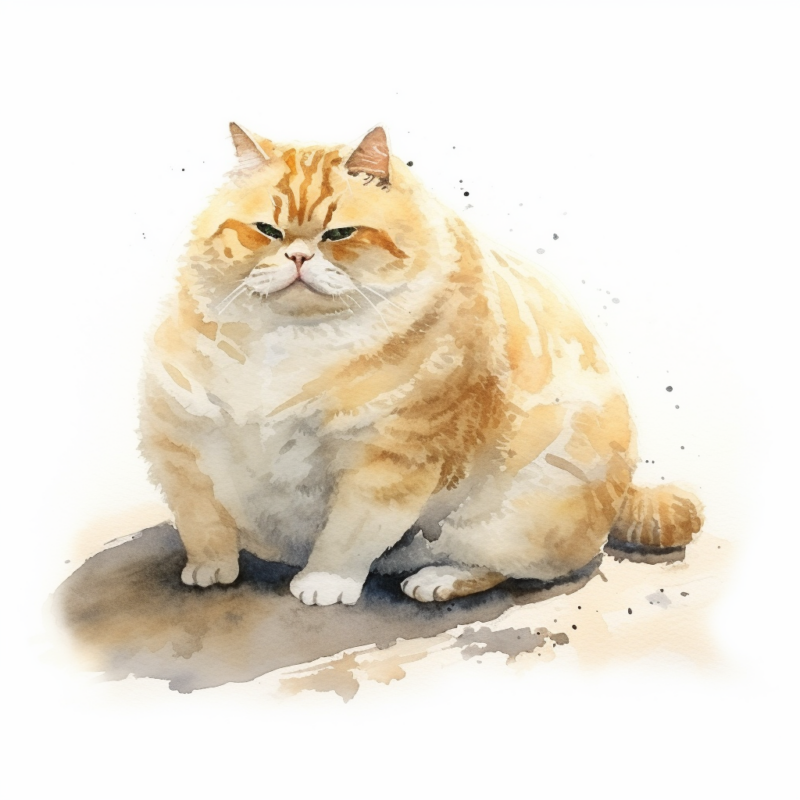
Portion Control
Overfeeding is one of the most common causes of obesity in cats. Cats often gain weight if they’re allowed free access to food. Implementing portion control can help manage your cat’s calorie intake. This often involves providing smaller, more frequent meals throughout the day instead of one or two large meals. An automatic feeder can be a useful tool for maintaining consistent feeding times and portions.
Increased Physical Activity
Increasing your cat’s physical activity level can help burn excess calories and promote weight loss. This could involve interactive play sessions with toys encouraging chasing, jumping, and pouncing, such as laser pointers or feather toys. Encouraging your cat to use vertical space by providing climbing towers or shelves can also help increase activity.
Weight Monitoring
Regular weight checks are crucial to monitor your cat’s progress and adjust the diet and exercise plan. Weight loss in cats should be slow and steady, usually aiming for a loss of 1-2% of their body weight per week. Losing weight too rapidly can lead to serious health complications like hepatic lipidosis.
Medical Treatment
In certain cases, if dietary changes and increased exercise aren’t enough, your veterinarian may consider medication to assist in weight loss. This is usually only considered for cats with serious obesity-related health problems. It’s important to remember that any medication should be combined with diet and lifestyle changes, not as a substitute.
Managing Underlying Conditions
If an underlying medical condition, such as hypothyroidism, contributes to your cat’s weight gain, this must be addressed as part of the weight loss strategy. For example, medication may be needed to control the condition, along with dietary changes.
Regular Follow-Ups
Regular veterinary check-ups are essential during a weight loss program. These visits allow the veterinarian to monitor your cat’s health closely, make necessary adjustments to the weight loss plan, and detect and manage any potential complications early.
Remember, weight loss in cats should be a slow, steady process. Rapid weight loss can lead to serious health problems. Patience and persistence are key in successfully managing your cat’s weight.
Preventing Obesity in Cats
Preventing obesity in cats is largely about maintaining a balanced diet and ensuring regular exercise. Here are some key things that pet owners can do:
- Maintain a Balanced Diet: Your cat’s diet should consist of high-quality cat food that provides the nutrients necessary for a cat’s health. It’s important to understand the nutritional needs of cats, which are obligate carnivores and require a diet high in protein. Portion control is crucial because even small overfeeding can lead to weight gain over time. Consult your vet about the appropriate quantity and type of food for your cat.
- Regular Exercise: Physical activity helps cats burn calories and can aid in weight management. This might include climbing a cat tree, chasing a toy mouse or feather wand, or playing with balls. Rotate toys to keep your cat interested, and aim for about 15-30 minutes of playtime daily. Cats are often more active during dawn and dusk, so consider incorporating playtimes during these periods.
- Monitor Weight: Monitoring your cat’s weight lets you catch any increases early and adjust their diet or exercise routine accordingly. Consider getting a pet or a baby scale to weigh your cat at home.
- Controlled Feeding: Providing your cat with measured meals at set times throughout the day can help control their calorie intake. This method can also make it easier to spot changes in appetite, which can indicate other health issues.
- Regular Vet Check-ups: Regular vet visits are essential for maintaining your cat’s health. Your vet can monitor your cat’s weight, provide advice on feeding, and check for any health issues that could contribute to weight gain.
- Provide Mental Stimulation: Mental stimulation can help deter overeating due to boredom. Provide your cat with puzzles and interactive toys, or even consider clicker training.
- Educate Yourself: It’s essential to understand the risks associated with feline obesity, such as diabetes, arthritis, urinary issues, and reduced lifespan. Also, familiarize yourself with body condition scoring charts to help visually assess your cat’s weight at home.
- Manage Underlying Conditions: Some medical conditions, like hypothyroidism, can predispose your cat to weight gain. If your cat has a medical condition, work closely with your vet to manage the disease and keep your cat’s weight in check.
- Healthy Snacking: If you give your cat treats, ensure they’re healthy and factor into your cat’s daily calorie intake. Avoid giving them scraps from the table or human food, as many foods can be toxic to cats and contribute to weight gain.
- Environment Enrichment: Cats are natural hunters. Simulating this behavior can help keep your cat physically active and mentally stimulated. Try hiding small portions of their food around the house for them to “hunt.”
Remember, maintaining a healthy weight can contribute significantly to your cat’s overall well-being and longevity. It may require some effort and time, but the health benefits for your cat are well worth it.
Frequently Asked Questions
Disclaimer: The information provided on this veterinary website is intended for general educational purposes only and should not be considered as a substitute for professional veterinary advice, diagnosis, or treatment. Always consult a licensed veterinarian for any concerns or questions regarding the health and well-being of your pet. This website does not claim to cover every possible situation or provide exhaustive knowledge on the subjects presented. The owners and contributors of this website are not responsible for any harm or loss that may result from the use or misuse of the information provided herein.

